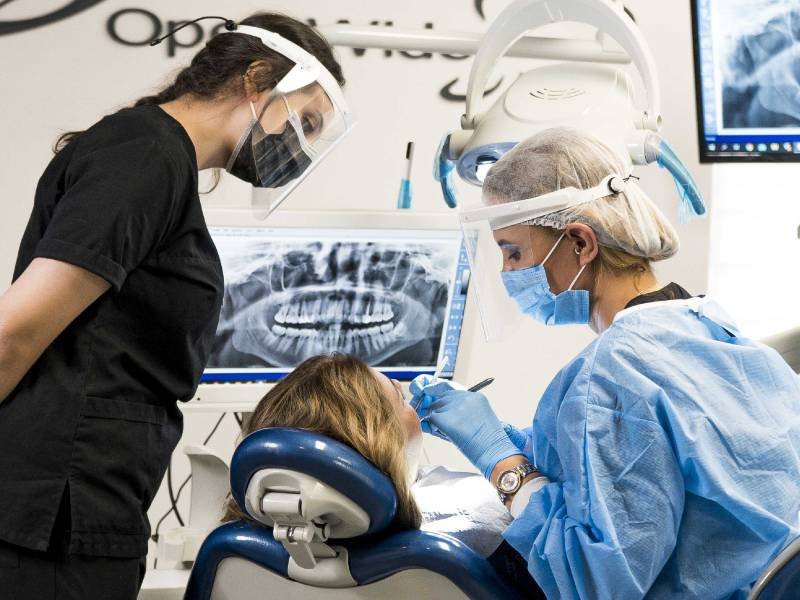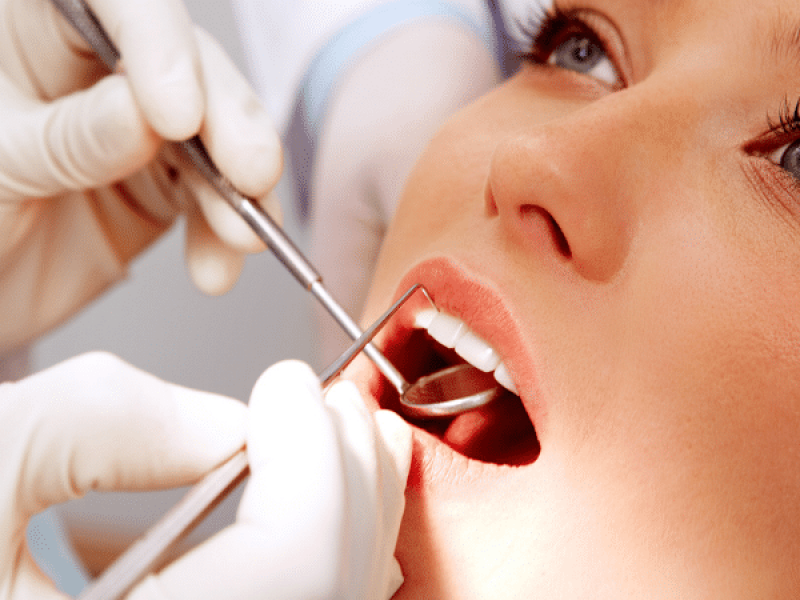Dealing with a broken tooth can be distressing, but it becomes even more concerning when a portion of the tooth root remains embedded in the gum tissue. This situation can cause discomfort, potential infection, and complications if left untreated. In this article, we will explore the condition of a broken tooth root in the gum, its causes, symptoms, and available treatment options.
Understanding a Broken Tooth Root in the Gum
When a tooth breaks or fractures, it can sometimes result in a portion of the tooth root remaining lodged within the gum tissue. This can occur due to dental trauma, untreated decay, or a weakened tooth structure. The broken root fragment can vary in size, ranging from a small piece to a substantial portion of the root.
Causes of a Broken Tooth Root in the Gum
Dental Trauma: A sudden impact to the mouth, such as a fall, sports injury, or accident, can cause a tooth to break or fracture, resulting in a root fragment being left behind.
Untreated Tooth Decay: Dental cavities that are left untreated can weaken the tooth structure, making it more prone to breakage. In some cases, the decay can extend into the root, causing a portion to break off.
Previous Dental Procedures: Teeth that have undergone extensive dental work, such as root canals or previous extractions, can be more susceptible to fracturing, especially if they were not adequately restored or protected afterward.
Symptoms of a Broken Tooth Root in the Gum
Pain and Discomfort: The presence of a broken tooth root in the gum can cause persistent pain or discomfort. The severity of the pain can vary depending on the size and location of the broken root.
Gum Swelling and Inflammation: The gum tissue surrounding the broken root fragment may become swollen, tender, or red. In some cases, an abscess or infection can develop, causing additional symptoms like pus formation or a bad taste in the mouth.
Difficulty Chewing: Chewing or biting down on food may cause pain or discomfort in the affected area.
Gum Sensitivity: Increased sensitivity or pain when brushing, flossing, or consuming hot or cold foods and beverages may be experienced.
Treatment Options for a Broken Tooth Root in the Gum
Extraction: In most cases, the preferred treatment for a broken tooth root in the gum is extraction. The dentist will carefully remove the remaining root fragment, ensuring all pieces are completely removed. This may involve a surgical procedure, especially if the root fragment is deeply embedded.
Root Canal Treatment: In some situations, if the broken root fragment is part of a tooth that can be saved, a root canal procedure may be performed. This involves removing the infected or damaged pulp and root fragment, cleaning the area, and sealing it to prevent further infection.
Antibiotics: If there is evidence of infection or the potential for infection, the dentist may prescribe antibiotics to eliminate or prevent the spread of bacteria. Antibiotics are often used in conjunction with other treatment options.
Restoration Options: After the broken root fragment is removed, the dentist will discuss suitable options for restoring the missing tooth structure. This may involve dental implants, bridges, or other dental prosthetics to restore functionality and aesthetics.
Dealing with a broken tooth root in the gum requires prompt dental attention to prevent further complications and alleviate discomfort. Extraction or root canal treatment are common approaches to address this condition. Seeking professional dental care is crucial to accurately diagnose the situation and determine the most appropriate treatment option. Remember, early intervention is key in preserving oral health and restoring the proper function and appearance of your smile.







Every Word You Share Matters to Us
Your feedback means the world to us. We're truly grateful for your support, your trust, and every suggestion that helps us become better. Thank you for being part of our journey.
Well I have just visited and had my first phase of treatment,throughout the process ,I have been in contact with Arina who has guided me throughout the process ,with prices,hotels,transfers and any questions I needed answering ,I came off the plane and my transfer was waiting for me to take me to hotel,I stayed at the La Marge,a lovely hotel and the staff couldn’t have done anymore,very friendly and always helpful,day 1 I was picked up in the morning by the transport and met by the lovely Anya who put me at ease straight away,day 1 is exhausting but getting most of it all done is the best way,I left there sore and a bit swollen,but had all the antibiotics,painkillers,mouthwash,ice packs to help,personally I went back straight to sleep and woke up in the morning,it was a lot better,all the staff at Tulay are first class,the cleanliness and professional manner in which they all shown was amazing,i want to thank them all and see you in September for Phase 2
I must say that the whole process is completely digital. First, they take your 3D jaw tomography and explain everything in detail, you get all the info about the process before your treatment. For mouth impressions, they use a 3D scanner which is one of the best ones (believe me I researched a lot about these things while choosing a clinic). They also have their own lab and your crowns are done there, that’s why everything s done super fast! I enjoyed my experience at Akkol Dental
Big shoutout to Anya! As a foreigner, communication is key, and Anya made everything clear and easy, she explained the process from start to finish and I felt safe at this place. Doctor Adnan did my crowns and the result was fantastic!
I was verry happy for this company the staff was sweet and proffesinelt. I pay 1.750€ for 12 crowns take € hvis you for the payment Regards Detlef Otto Denmark
I came to Antalya to get zirconia crowns, and I’m beyond happy with the results! Coordinator Arina was incredibly helpful from start to finish, she explained every step of the process, helped me with transportation, and made sure I was comfortable the entire time. Dr. Rifat is a true artist, he carefully designed my new smile, and my crowns look very natural and beautiful. The procedure was painless, and the clinic’s technology is top-notch. Now I can smile with confidence again! Highly recommended
Highly recommend clinic Tülay Akkol, professional approach of doctors! In love with my new smile. Tnaks to all the doctors and staff!
Where do I start? I would like to extend my gratitude to Arina and all the crew at Tulay Akkol dental centre. Arina was absolutely fantastic throughout the entire process and really excelled in great customer service. From the moment I arrived in Turkey with my family the transfer to the hotel was smooth and stress free. The hotel we stayed in was fantastic and the staff there were lovely. I personally would like to thank the dentist for excellent work and for being very patient and understanding. I can't speak highly off Tulay Akkol and the fantastic treatment I received for my smile makeover. Arina, you are a star and thank you for everything.
I came to the clinic to make my implants and crowns. Everything went really smoothly, the doctors are super professional, the hotel and translator is a top notch Greatly recommend best clinic in Antalya. Looking forward to my next visit thank you
Very pleasant visit. Office atmosphere is professional, staff is very friendly. Definitely recommend.
Had a really great experience with Tulay akkol , would definitely recommend!! Really love my new teeth :)